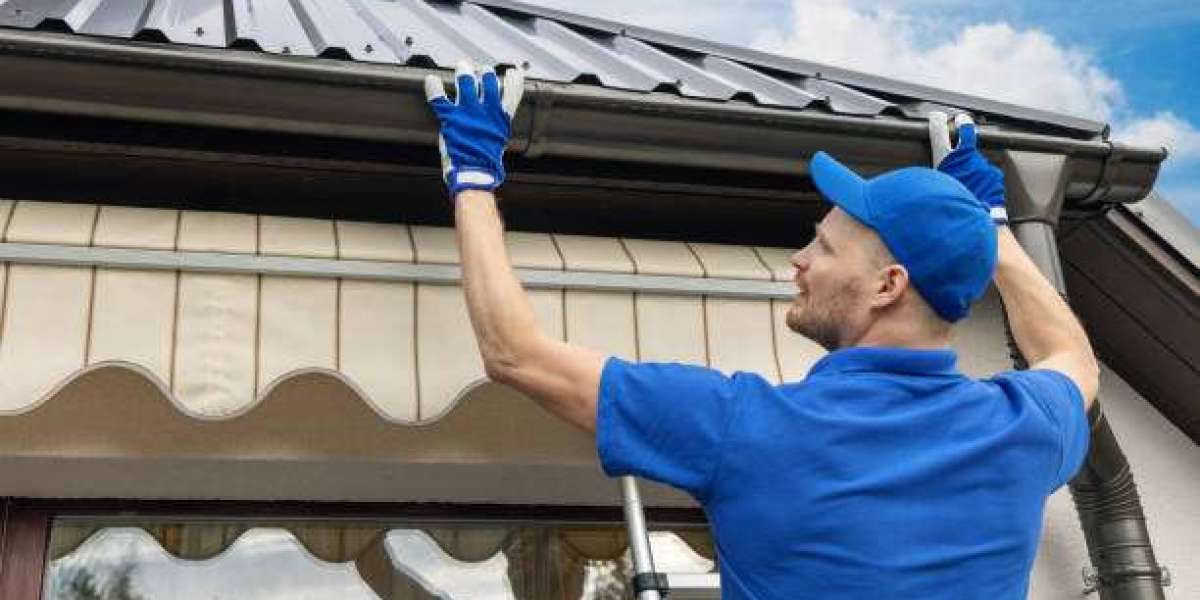Gutters are a vital part of any home, serving as the first line of defense against water damage. They divert rainwater away from the foundation, walls, and landscaping, preventing potential structural and aesthetic issues. However, over time, gutters can become damaged or clogged, leading to leaks, overflows, and other costly problems. In this comprehensive guide, we’ll explore everything you need to know about gutter repair, ensuring your home remains safe and well-maintained.
Why Gutter Repair Matters
Damaged gutters can have a ripple effect on your home’s overall health. Here’s why gutter repair should be a priority:
- Foundation Protection: Gutters prevent water from pooling around the foundation, which can cause cracks and instability.
- Roof Longevity: Proper drainage prevents water from backing up and damaging the roof structure.
- Interior Safety: Leaks and overflows can lead to interior water damage, affecting walls, ceilings, and insulation.
- Curb Appeal: Well-maintained gutters enhance the visual appeal of your home by preventing unsightly stains and erosion.
Neglecting gutter maintenance can turn minor issues into significant and costly repairs.
Common Gutter Problems
Several issues can arise with gutters, many of which are easily identifiable with regular inspections. Here are the most common problems:
- Clogged Gutters: Leaves, twigs, and other debris can block water flow, causing overflows and leaks.
- Cracks and Holes: Small cracks or holes can lead to water leakage, worsening over time.
- Sagging or Loose Gutters: Improperly secured gutters can pull away from the house, disrupting water flow.
- Rust and Corrosion: Metal gutters, especially those made of steel, can corrode and weaken with age.
- Improper Slope: A gutter without the correct pitch will fail to drain properly, causing water buildup.
- Detached Downspouts: Downspouts disconnected from the main gutter system can cause water to pool around the foundation.
Identifying these issues early can save time, money, and effort in the long run.
DIY Gutter Repair: Step-by-Step Solutions
Many gutter problems can be addressed with a little effort and the right tools. Here’s how to tackle common issues:
1. Cleaning Clogged Gutters
- Tools Needed: Ladder, gloves, gutter scoop, hose, or pressure washer.
- Steps:
- Use a ladder to access the gutters safely.
- Remove large debris with a scoop or your hands (wear gloves for protection).
- Flush the gutters with water to remove smaller particles and ensure proper flow.
2. Fixing Leaks and Holes
- Tools Needed: Waterproof sealant, gutter patch kit, wire brush.
- Steps:
- Clean the area around the leak with a wire brush to remove debris and rust.
- Apply waterproof sealant to small cracks or holes.
- For larger holes, use a gutter patch kit and seal the edges to ensure durability.
3. Repairing Sagging Gutters
- Tools Needed: New hangers, screws, drill.
- Steps:
- Locate the sagging sections and check the condition of the hangers.
- Replace damaged hangers with new ones and secure them tightly.
- Ensure the gutter is sloped correctly (1/4 inch decline every 10 feet).
4. Reconnecting Downspouts
- Tools Needed: Screws, drill, downspout straps.
- Steps:
- Reattach the downspout to the gutter with screws.
- Use downspout straps to secure it to the house for added stability.
When to Call a Professional
Some gutter issues require the expertise of a professional. Consider hiring a specialist if:
- There’s Extensive Damage: Large sections of the gutter system are broken or corroded.
- Your Gutters Are Difficult to Access: Multi-story homes or steep roofs pose safety risks for DIY repairs.
- Persistent Water Pooling Occurs: Chronic drainage problems may require a redesign or replacement of the gutter system.
- You Need a Full Replacement: Installing a new gutter system is a complex task best left to professionals.
Preventive Maintenance Tips for Gutters
Prevention is always better than repair. Implement these maintenance tips to keep your gutters in top condition:
- Regular Cleaning: Clean gutters at least twice a year, especially in spring and fall.
- Install Gutter Guards: Use guards to reduce debris buildup and minimize cleaning frequency.
- Inspect After Storms: Check for damage, blockages, or dislodged sections after heavy rain or wind.
- Check the Slope: Ensure gutters maintain the correct pitch for optimal drainage.
- Trim Nearby Trees: Overhanging branches can drop leaves and twigs into the gutters.
The Cost of Gutter Repair
The cost of gutter repair varies depending on the severity of the issue and whether you choose to DIY or hire a professional:
- DIY Repairs: Supplies such as sealants, screws, and brackets typically cost $10–$50.
- Professional Repairs: Hiring a professional can cost $150–$500, depending on the complexity of the job.
- Replacement Costs: A complete gutter replacement, including labor, can range from $1,000 to $3,000 or more.
Investing in timely repairs can prevent larger, more expensive problems down the line.
Choosing the Right Gutter Repair Professional
When hiring a contractor for gutter repair or replacement, keep the following in mind:
- Experience: Look for professionals with proven expertise in gutter systems.
- Customer Reviews: Check online reviews or ask for references to gauge service quality.
- Warranty: Ensure the contractor offers warranties for their work.
- Licensing and Insurance: Confirm that they are licensed and insured to avoid liability issues.
A reliable contractor can provide peace of mind and ensure the job is done correctly.
Gutter Replacement: When Repairs Aren’t Enough
In some cases, gutter replacement is the most cost-effective solution. Consider replacing your gutters if:
- They are over 20 years old and showing significant wear.
- Multiple sections have rust, corrosion, or irreparable damage.
- The system doesn’t meet your home’s drainage needs.
Modern gutters come in various materials and designs, such as aluminum, vinyl, and seamless systems, offering improved durability and aesthetics.








